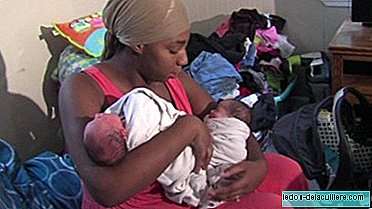The Canadian gynecologists will not perform a caesarean section protocol in those births in which baby come on buttocks, according to the new guidelines for Canadian health professionals that were released last week.
These new indications are motivated by an exhaustive review of the studies and clinical evidence about the results of vaginal births compared to caesarean sections in this type of delivery.
In recent weeks babies turn in the womb to stay in a head-down position, however 3-4% of babies do not and at the time of delivery they have a "buttocks" position, with the feet and buttocks facing down.
To date, this type of presentation meant that a majority of mothers had a caesarean section. In fact, the percentage was such that caesarean section had already become an almost automatic practice. According to Dr. Robert Gagnon, one of the authors of the new guides, "What we have found is that, in some cases, vaginal buttocks are a safe option, and obstetricians should be able to offer women the chance to give birth in a traditional way."
AdvertisingApparently, since at the time a baby came from buttocks the recommendation was to perform a C-section a large number of Canadian obstetricians lack adequate training to attend a vaginal buttock delivery.
This situation is extensive to our country, Spain, since protocols for babies who come from buttocks recommend caesarean section.
I remember a talk by Inma Marcos (midwife who attends home delivery and IBCLC of Alba Breastfeeding) to which I went three years ago when I asked what she would do if she was in a home with a breech birth. The answer was simple: "Before the birth, I would have tried to turn the baby around, because there are maneuvers for it. In case of not obtaining it, I would attend the delivery in the way that the deliveries that come from the buttocks are attended."
It left me hesitant because I believed that a breech was irreversibly caesarean section. Another midwife qualified Inma's words by stating: "The problem is that they have been doing caesarean sections for so long in these cases that current gynecologists do not know how to attend this type of delivery."
This situation of lack of training leads the Society of Obstetricians and Gynecologists of Canada to formulate the objective of training obstetricians so that they can offer women the possibility of attending a vaginal buttock delivery whenever possible.
Despite the news, it is noted that many of the babies that come from buttocks will still require a caesarean section. To choose one of the two options, a detailed ultrasound will be performed prior to delivery to detect in which cases there may be problems with the umbilical cord and a cesarean section is necessary and to opt for vaginal delivery in all other situations.
As I have seen in the guides, they have verified that the risk for the baby is lower by being born vaginally than by caesarean section. Hopefully this situation will be extended to other countries such as ours, where the quality of care improves day by day.












